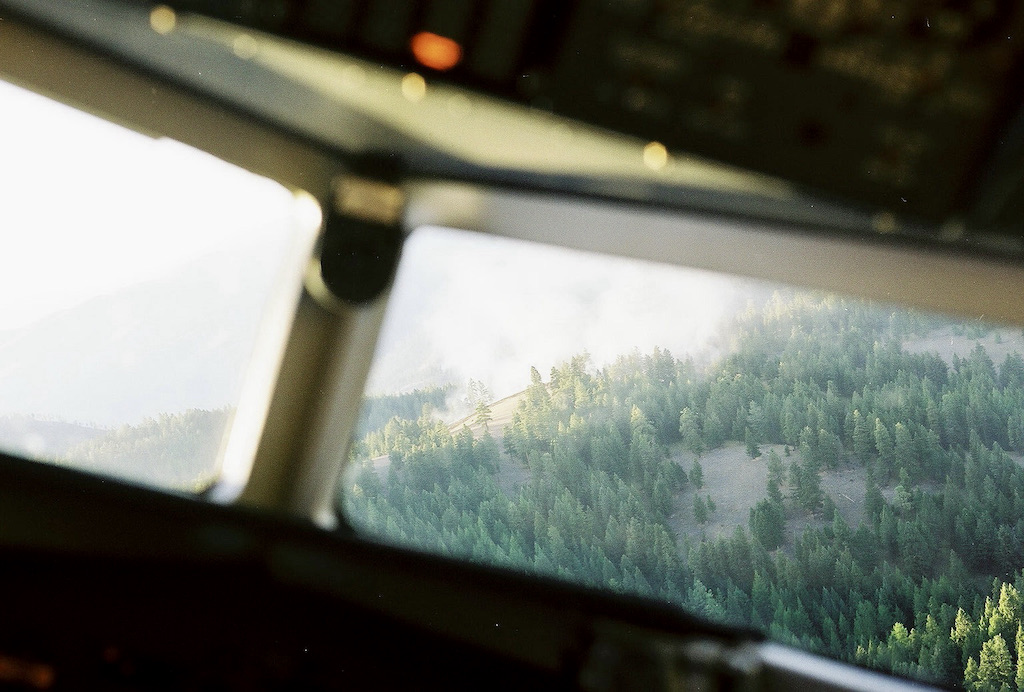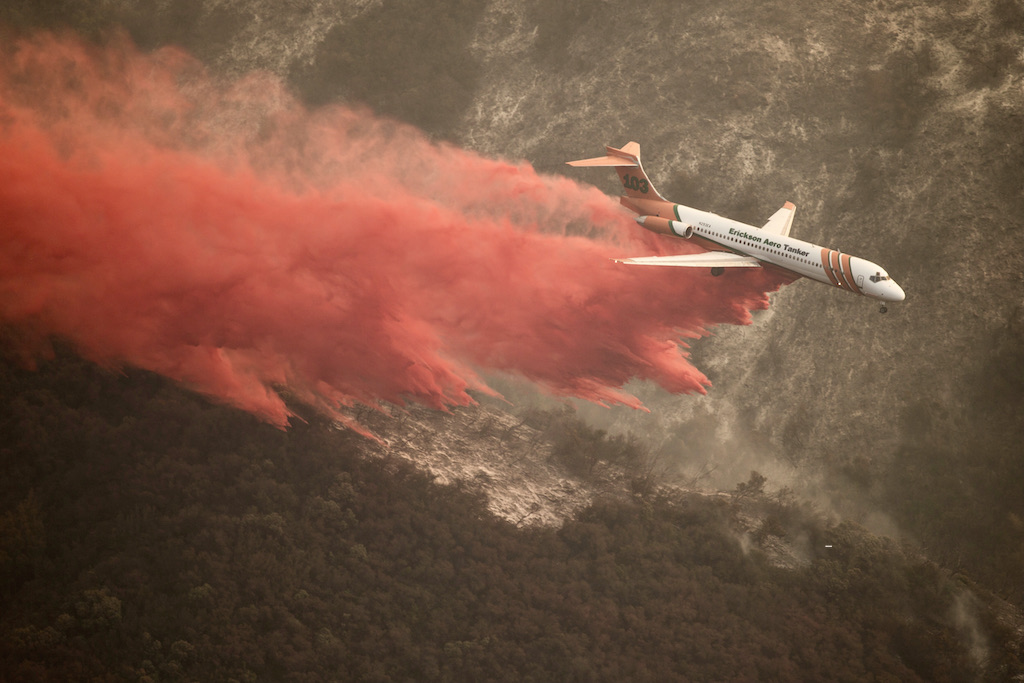Aerial Firefighting Involves Heat, Smoke And Turbulence, Part 2

Aerial firefighting aircraft are subjected to one of the most severe of fatigue environments.
The heat created by wildfire flames causes abrupt updrafts and downdrafts, which in turn creates considerable stress on responding airframes and pilots. Much of the aerial firefighting in the western U.S. occurs in mountainous terrain, and weather conditions will often include gusting winds. Gusting winds over undulating terrain will produce another source of bone-bruising atmospheric turbulence.
Not only does this turbulence complicate a flight crew’s ability to maneuver a heavily-laden aircraft through difficult terrain, but it also induces unusual stress on the airframes.
This issue was brought to the industry’s attention after the tragic loss of two air tankers in 2002. The FAA’s Office of Aviation Research and Development, in collaboration with Celeris Aerospace Canada, discovered that aerial firefighting aircraft are subjected to one of the most severe of all fatigue loading environments. Accelerated metal fatigue is caused by both the atmospheric turbulence and pilot-commanded maneuvering.
The Beechcraft Be-58P Baron was long used as a lead plane or air attack ship by the U.S. Forest Service, but those airframes were retired in 2003 after extensive cracks were found in the structure.
‘Into The Valley of Fire’

Every drop is different. The general concept is to fly about 200 ft. over the terrain and drop the retardant or para-cargo so that it lands where the firefighters need it. Often the wildfire environment is filled with steep terrain, the vertical air currents are turbulent, the winds are chaotic, the canyon walls leave precious little room for maneuvering, the smoke hinders visibility, and nearby trees can seem huge.
Excessive density altitudes are the norm during wildfire season, especially when conducted in western mountainous terrain. Engines are pushed to their operating limits and wings simply don’t produce as much lift in the hot thin air. Limited thrust and lift combine to further restrict the heavily-laden air tanker’s maneuverability in the confines of canyons and gorges.
It is not uncommon that the drop zone is difficult to see because of tall trees and the terrain. The curved walls of a canyon and the steep terrain can prevent aerial firefighters from seeing the drop spot until they are right over the target.
A prominent hazard to aerial firefighters in the drop phase are “snags.” A snag is an extra-tall tree that is significantly taller than the adjacent trees. The trees don’t stand out amongst each other when viewed from higher angles and their coloring matches the other trees in the vicinity. A collision with a snag is an ever-present risk that can cause substantial damage to an airframe.
The topography is always a prime factor in weighing the pros and cons of a proposed drop. An especially challenging condition occurs when the desired drop line spans across a gulch. To the uninitiated it might sound like the solution is to simply dive down into the gulch, drop the retardant at the bottom of the gulch, then apply full power and climb out. However, dropping into a gulch with a steep hillside opposite in the windshield is unacceptable. There is an online video of an air tanker making a drop across a modest gulch, but the pilots badly estimated the climb-out capability of their aircraft in addition to being tricked by the visual illusion of the height of the opposite ridgeline. Their aircraft cleared the opposing ridgeline with barely a few feet, as indicated by the distinctive wake vortices left in its wake.
The low-altitude flight environment is filled with visual illusions. The earth’s natural horizon is obscured in mountainous terrain. This creates a false perception of the horizon, and it is worsened by the sloping terrain. The color of the terrain and texture of the vegetation contributes to the visual illusions. The gray shading and texture of western landscapes dominated by sagebrush make it harder to see the undulations in the terrain. This feature can also cause an intervening ridge to blend into the landscape.
The visibility is often obscured by a combination of smoke, haze, shadows and sun angle. Depending on the angle of the sun and the direction of the drop approach, the visibility can appear to be nil. East-west canyon orientations are impacted the most, and especially when the sun is lower toward the horizon.
Variations In Wind Flow

Varying winds are dangerous to firefighters both on the ground and in the air. The movie “Only the Brave” briefly illustrated the effect of a collapsing cumulus cloud whose downdrafts could funnel through canyon terrain. These unseen rivers of fast air can flow for long distances, creating unpredictable wind shear dangerous to heavily laden aircraft during low-altitude maneuvering.
The variations in the wind flow complicate the decision making of pilots trying to drop their retardant or para-cargo on a precise spot. Wind flow indications at altitude of the prevailing winds may not be accurate indications down in the drop locations. Shed vortices, recirculation zones and localized channeling of the winds can all produce wind shifts that are entirely different just a short distance away.
A former AT-802 pilot recalled an incident in which the Air Attack was reporting winds from a westerly direction. However, as the string of SEATs dropped their retardant, the low-level wind shifts blew the retardant far off target, in addition to creating horrendous low altitude turbulence. When a lead plane showed up at the incident and flew several reconnaissance runs at a moderately low altitude, the lead plane pilot shut down the tanker drops over safety concerns.
The former SEAT pilot remarked that the difference between a non-pilot sitting in an ATGS plane orbiting at 1500-2000 ft. AGL while tankers battled with the turbulence at 200 ft. AGL cannot be overstated.
Planning an escape route in the event of an engine failure is of paramount importance when battling wildfires, in Part 3.
Aerial Firefighting Involves Heat, Smoke And Turbulence, Part 1: https://aviationweek.com/business-aviation/aircraft-propulsion/aerial-f…





